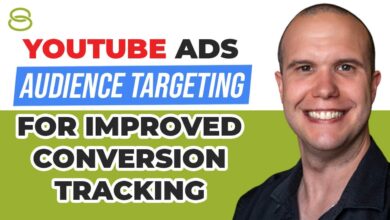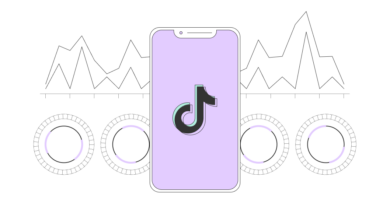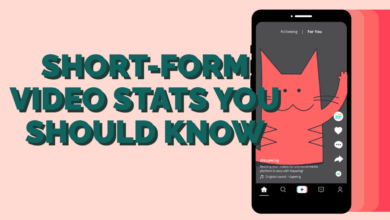
YouTube Custom Intent Audiences How-To Guide
How to set up a YouTube custom intent audience is a powerful strategy for reaching viewers actively seeking specific information. This guide delves into the intricacies of creating and targeting these audiences, moving beyond simple demographics to tap into the precise desires of your ideal viewers.
We’ll explore defining these audiences, crafting them from various data sources, and optimizing targeting strategies. Learn how to measure success and refine your approach to maximize your YouTube campaign performance. This comprehensive guide is your key to unlocking the potential of custom intent audiences on YouTube.
Defining Custom Intent Audiences on YouTube
YouTube’s custom intent audiences allow creators to target viewers based on their specific search queries and browsing history. This goes beyond traditional targeting methods like demographics or interests, enabling a more refined approach to reaching users actively seeking information or solutions related to a particular topic. This advanced targeting strategy allows for more precise audience segmentation, leading to higher engagement and better campaign performance.Custom intent audiences leverage YouTube’s vast trove of user data to identify viewers actively exploring content related to specific topics.
Instead of relying on broad interests or demographics, this approach focuses on the user’s current intentions, providing a powerful way to connect with individuals already interested in what a creator has to offer. This is a significant advancement over general targeting methods, allowing for highly focused ad campaigns and content recommendations.
Data Used to Define Custom Intent Audiences
The data used to define custom intent audiences is comprehensive, combining various sources to provide a detailed picture of user behavior. This data includes search queries, watch history, and engagement with related content. This intricate data collection ensures that the audience targeted is highly relevant to the creator’s content. It moves beyond simple demographic information and delves into the active interests and search behaviors of potential viewers.
Examples of Custom Intent Audience Criteria
Creators can use a multitude of criteria to define their custom intent audiences. These criteria range from highly specific s to broader topics. For example, a fitness instructor might target viewers searching for “beginner weightlifting routines” or “best home workout equipment.” A cooking channel could target those searching for “easy vegetarian recipes” or “healthy meal prep ideas.” A tech reviewer could target individuals looking for “best laptops for students.” These examples showcase the precision and versatility of custom intent audiences.
Comparison of Targeting Methods
| Targeting Method | Description | Data Used | Focus | Example |
|---|---|---|---|---|
| Custom Intent Audiences | Targets viewers based on specific search queries, watch history, and engagement with related content. | Search queries, watch history, content engagement | Current intent | Users searching for “best running shoes for marathon training.” |
| Interests | Targets viewers based on broad interests, hobbies, and passions. | Broad interests, hobbies, and passions | General affinity | Users interested in “running” or “fitness.” |
| Demographics | Targets viewers based on age, gender, location, and other demographic factors. | Age, gender, location, etc. | General characteristics | Users aged 25-35 in New York City. |
This table highlights the key differences between custom intent audiences and other targeting methods. Custom intent audiences focus on the specific intentions of the user, while other methods rely on broader characteristics. The table effectively illustrates the distinction and the value of targeting based on current intent.
Creating Custom Intent Audiences

Understanding your audience’s intent is crucial for effective YouTube advertising. Custom intent audiences allow you to target viewers actively searching for specific information, leading to higher engagement and conversions. This approach is more sophisticated than broad demographic targeting, as it focuses on users actively expressing a need or desire related to your product or service. By understanding the precise search terms your ideal customers use, you can tailor your ad campaigns to resonate more deeply with their expressed needs.
Building Custom Intent Audiences
Creating custom intent audiences on YouTube involves several key steps. First, you need to define the specific topic or product you want to target. Next, you need to identify the search terms or phrases that viewers use when seeking information related to that topic. Finally, you use YouTube’s tools to create and manage the audience. This targeted approach allows you to optimize your ad spend and ensure your message reaches the most receptive audience.
Sourcing Data for Custom Audiences
Several data sources can be leveraged to build effective custom intent audiences. Understanding these sources is critical for ensuring the accuracy and relevance of your target audience. The most effective method will often involve a combination of approaches.
- YouTube Search Terms: Identifying the specific search queries related to your product or service is paramount. Tools like Google Trends and YouTube’s search suggestions can help you discover these phrases. Consider analyzing competitor videos and comments for valuable insights into the language used by potential customers.
- Website Search Data: If you have a website, analyze search queries used by visitors. This data provides direct insight into the terms your audience uses when actively searching for information related to your products or services.
- Social Media Data: Analyze social media conversations to understand how people are discussing topics related to your product or service. Platforms like Twitter and Facebook can offer valuable clues regarding trending topics and s that are relevant to your target audience.
- Competitor Analysis: Studying the search terms used by your competitors can reveal opportunities for finding new and relevant search terms for your own custom intent audience.
Identifying Specific YouTube Search Terms
To pinpoint the exact YouTube search terms reflecting a viewer’s intent to learn about a particular topic, employ a multi-faceted approach. Analyzing video titles, descriptions, and comments related to the topic can reveal the precise terminology employed by users seeking information.
- Research Tools: Utilize research tools to uncover relevant search terms and their search volume. This will help you identify phrases with sufficient search volume to make your intent audience effective.
- Analyzing Competitor Videos: Carefully review videos from competitors, looking at the titles, descriptions, and tags. This can offer valuable insights into the search terms used by viewers seeking information on similar topics.
- Utilizing YouTube Search Suggestions: Leverage YouTube’s search suggestions to identify relevant search phrases. These suggestions are based on what other users are actively searching for, providing a valuable source of information about the terms used to search for content related to your specific topic.
Refining Custom Audiences with YouTube Insights
YouTube’s audience insights tools provide valuable data for refining and optimizing your custom intent audience. These tools are crucial for assessing the effectiveness of your audience and identifying areas for improvement.
- Analyzing Audience Demographics: Understanding the demographics of your custom intent audience helps you tailor your messaging and video content to resonate with the specific characteristics of your target audience.
- Evaluating Audience Engagement: Assess the level of engagement with your ads and videos within your custom intent audience. This data will indicate whether your chosen search terms are accurately capturing the desired intent.
- Monitoring Performance Metrics: Track key metrics such as click-through rates (CTRs), watch time, and conversions. These metrics provide valuable feedback on the performance of your custom intent audience and help optimize your targeting strategy.
Data Sources for Custom Intent Audiences
The following table Artikels various data sources available for building custom intent audiences.
| Data Source | Description |
|---|---|
| YouTube Search Terms | Identify search terms used by viewers looking for information on a specific topic. |
| Website Search Data | Analyze search queries from website visitors to understand their interests. |
| Social Media Data | Analyze conversations on social media platforms to understand how people discuss relevant topics. |
| Competitor Analysis | Study competitor’s strategies to uncover new search terms and trends. |
Targeting Strategies
Once you’ve defined your custom intent audiences on YouTube, effective targeting strategies are crucial for maximizing campaign ROI. These strategies go beyond simply identifying the audience; they involve understanding their needs and tailoring your video content to resonate with their specific search intent. By employing the right techniques, you can significantly improve engagement, conversions, and overall campaign performance.This section delves into specific strategies for targeting custom intent audiences, showcasing how to tailor video content for different segments, testing approaches for optimization, and acknowledging potential limitations.
We’ll also examine best practices for creating highly targeted campaigns, ensuring your videos reach the right people at the right time.
Effective Targeting Strategies
Understanding the nuances of your audience’s search intent is paramount to creating effective targeting strategies. By deeply analyzing their motivations, you can craft videos that address their specific needs and desires, leading to increased engagement and conversions. This goes beyond simple s; it involves a deeper understanding of the user journey and the context surrounding their searches.
Tailoring Video Content
Creating video content that resonates with specific intent segments requires careful consideration of the user’s needs and desires. Videos should address the user’s questions directly and offer solutions to their problems. If a user is searching for “how to bake a cake,” your video should clearly demonstrate the process, providing helpful tips and tricks along the way. Consider using specific s relevant to each intent segment within the video’s title, description, and tags.
Testing Targeting Approaches
Testing different targeting approaches is crucial for optimizing campaign performance. Start by A/B testing different audience segments and video variations. Analyze the performance metrics (e.g., watch time, click-through rate, conversions) of each variation to identify the most effective strategy. Use analytics dashboards to monitor key performance indicators (KPIs) and adjust your targeting strategy accordingly. By continuously testing and refining your approach, you can ensure your campaigns achieve optimal results.
Potential Limitations and Challenges
While targeting custom intent audiences offers significant benefits, there are limitations to consider. Precisely defining and reaching extremely niche audiences can be challenging. Additionally, accurately interpreting user intent can be tricky, requiring continuous refinement and adaptation of your targeting strategy. Budget constraints can also impact the scale of your targeting efforts. It’s essential to balance your campaign goals with the available resources and expected results.
Best Practices for Tailoring Video Content
| Intent Segment | Example Search Query | Video Content Focus | Call to Action |
|---|---|---|---|
| Informational | “best coffee beans for espresso” | Comprehensive overview of various coffee beans, their characteristics, and brewing methods. | Subscribe to the channel for more coffee-related content. |
| Transactional | “buy iPhone 14 Pro Max” | Product demonstration, comparison with other models, and direct links to purchase. | Visit the link in the description to purchase the product. |
| Navigational | “best Italian restaurants near me” | List of highly-rated Italian restaurants in the user’s area. | Visit the restaurants’ websites or call to make a reservation. |
| Commercial | “how to start a YouTube channel” | Detailed guide on setting up a channel, optimizing content, and growing a subscriber base. | Click the link in the description to learn more about starting your YouTube channel. |
Measuring and Optimizing Results
Successfully leveraging custom intent audiences on YouTube hinges on meticulous monitoring and optimization. A clear understanding of performance metrics allows you to fine-tune your targeting strategies and maximize your return on investment. This involves analyzing data to identify strengths, weaknesses, and areas needing improvement in your campaign approach. Continuous refinement of your custom intent audience criteria is crucial for sustained effectiveness and achieving your desired goals.
Figuring out how to set up a YouTube custom intent audience is key for targeted video marketing. Understanding your ideal viewer’s needs is crucial, and combining this with a strong paid and organic social media strategy, like the one discussed in this article , is a game-changer. Ultimately, a well-defined YouTube custom intent audience will help you reach the right people, driving more engagement and conversions.
Key Performance Indicators (KPIs)
Tracking the right metrics is paramount for assessing the efficacy of custom intent audience campaigns. These KPIs provide valuable insights into how well your targeting strategies are resonating with your target audience.
| KPI | Description | Importance |
|---|---|---|
| Impressions | The number of times your video or ad was displayed to viewers. | A baseline measure of audience exposure. High impressions can indicate broad reach but don’t guarantee engagement. |
| Clicks | The number of times viewers clicked on your video or ad. | A direct measure of viewer interest. Click-through rates (CTR) are derived from this metric. |
| Views | The number of views your video or ad received. | A strong indicator of viewer engagement. This shows if viewers are actively watching your content. |
| Watch Time | The total amount of time viewers spent watching your video or ad. | A key measure of viewer engagement. Longer watch times suggest compelling content. |
| Conversion Rate | The percentage of viewers who completed a desired action (e.g., subscribing, visiting a website). | Crucial for measuring the success of your campaign goals. High conversion rates indicate effective targeting and compelling calls to action. |
| Cost per Click (CPC) | The cost you pay for each click on your ad. | A critical metric for evaluating the efficiency of your ad spend. |
Data Analysis for Effectiveness Assessment
Data analysis is the cornerstone of optimizing your custom intent audience campaigns. Analyzing the collected data allows you to identify trends and patterns, allowing you to make informed decisions regarding targeting strategies.
- Examine click-through rates (CTR) to understand the effectiveness of your ad copy and visuals. A low CTR might suggest adjustments are needed to your ad messaging or visuals.
- Assess watch time to identify whether your videos resonate with viewers. Short watch times might indicate a need for more engaging content or a better understanding of your target audience’s interests.
- Analyze conversion rates to determine the effectiveness of your calls to action and overall campaign objectives. Low conversion rates highlight the need for refining your calls to action or tailoring your messaging.
- Review audience demographics to see if your custom intent audience aligns with your target market. If not, consider modifying your audience criteria.
Refining Custom Intent Audience Criteria
Continuous refinement of custom intent audience criteria is crucial for sustained success. Performance data provides the necessary insights to make informed adjustments.
- Iteratively adjust s, topics, and other criteria based on observed trends in engagement and conversions.
- Analyze which s or topics generate the most engagement and adjust your audience definition accordingly. A focus on high-performing s can significantly boost campaign performance.
- Continuously test and experiment with different audience criteria to identify the most effective combinations.
Addressing Audience Engagement Issues
Monitoring audience engagement is critical to maintaining campaign effectiveness. Identifying and resolving issues promptly is essential for maximizing results.
Setting up a YouTube custom intent audience is all about targeting viewers who are actively searching for specific products or services. Knowing how to leverage the right tools is key, and a well-executed Pinterest strategy can significantly boost your YouTube efforts. For instance, checking out the 9 best Pinterest tools for businesses here might provide valuable insights into optimizing your content and audience engagement.
This knowledge, combined with a clear understanding of your ideal customer, will help you craft highly targeted YouTube campaigns.
- Analyze low click-through rates to pinpoint weaknesses in ad copy, visuals, or targeting criteria.
- Identify reasons for low watch time, such as unengaging video content or misaligned targeting.
- Analyze audience demographics to ensure that your custom intent audience aligns with your target market. Mismatch in audience criteria can lead to decreased engagement.
Advanced Considerations
Taking your YouTube custom intent audience targeting to the next level requires a nuanced approach that goes beyond basic research. This involves understanding the interplay of various targeting methods, recognizing the importance of audience segmentation, and continuously adapting to evolving user behavior. Mastering these advanced techniques can significantly improve your campaign performance and ROI.By combining custom intent audiences with other targeting methods, you can create highly refined and effective campaigns.
Setting up a YouTube custom intent audience is a smart way to target specific viewers. You can use various methods, like targeting people who’ve watched specific videos or interacted with your channel. For a deeper dive into audience targeting, check out this fantastic Facebook marketing guide, facebook marketing guide 9 strategies to succeed , which offers actionable tips and tricks.
Ultimately, understanding your audience on YouTube is key to driving engagement and maximizing your reach.
This approach, while more complex, offers the potential for substantial improvements in campaign performance by allowing you to reach a more specific and receptive audience.
Combining Custom Intent with Other Targeting Methods
Effective campaigns often leverage a multi-faceted approach. Combining custom intent audiences with other targeting methods allows for a more granular approach to reach a more specific and engaged audience. This approach goes beyond simple matching and encompasses more nuanced user behaviors. For example, targeting a custom intent audience interested in “organic gardening” can be further refined by including demographics such as location (e.g., gardeners in California), interests (e.g., people who follow gardening influencers), and even device usage (e.g., those using tablets for gardening research).
Audience Segmentation for Optimized Content Strategy
Analyzing your custom intent audience data allows for more targeted content creation. Segmenting your audience based on specific interests, behaviors, and demographics helps tailor your content to resonate with different segments. For example, if your custom intent audience is interested in “beginner coding,” you could create separate videos for different levels of coding experience. This targeted approach enhances engagement and retention.
A well-defined content strategy that caters to various segments ensures a broader appeal and maximizes viewer engagement.
Leveraging A/B Testing for Targeting Refinement
A/B testing is crucial for optimizing custom intent audience targeting. Testing different variations of your targeting parameters, such as s, demographics, or interests, allows you to determine what resonates best with your audience. For instance, you could test two different custom intent audiences: one focusing on “Python for beginners” and another on “Python data analysis.” Analyzing the performance of each group allows for adjustments to your targeting strategy, ensuring that your content reaches the most receptive viewers.
Adapting to Evolving User Behavior
The digital landscape is constantly changing. User behavior evolves, impacting the effectiveness of custom intent audiences. Staying informed about these trends and adapting your targeting accordingly is crucial for maintaining high performance. Monitoring trends in online search queries, emerging interests, and shifting preferences is vital. For example, if the interest in “mobile app development” is shifting toward “cross-platform app development,” adjusting your custom intent audience targeting to reflect this change will be essential.
Regularly analyzing trends and adapting targeting strategies is crucial for long-term success.
Examples of Implementation: How To Set Up A Youtube Custom Intent Audience
Putting custom intent audiences into action requires a clear understanding of how to apply them effectively. This section provides real-world examples, case studies, and detailed descriptions to illustrate successful campaigns. Analyzing the results and how strategies adapted to feedback will provide a valuable perspective on the power of custom intent.
Real-World Examples of Successful Campaigns
Understanding successful campaigns offers insights into the effective use of custom intent audiences. These examples demonstrate how businesses have leveraged this targeting method to achieve specific marketing goals. The campaigns showcase how businesses have tailored their strategies to resonate with particular audience segments and drive desired outcomes.
- A travel agency targeting users searching for “luxury European river cruises” successfully ran a custom intent audience campaign. By focusing on individuals exhibiting strong intent to book, the agency saw a significant increase in qualified leads and conversions. This exemplifies how understanding user intent can translate into tangible business results.
- An online education platform created a custom intent audience for users actively researching “online MBA programs.” The platform effectively delivered targeted ads showcasing their program’s benefits, leading to a 25% increase in enrollment inquiries. This shows how custom intent can identify and engage high-potential leads.
- A software company targeting users searching for “project management software for startups” successfully built a custom intent audience. By showcasing their software’s specific features and benefits, they saw a 15% rise in trial sign-ups. This demonstrates how custom intent enables businesses to reach specific audience segments with tailored messaging.
Case Studies of Custom Intent Audience Application
Examining case studies provides valuable insights into how companies have applied custom intent audience strategies and the outcomes they have achieved. The detailed analyses showcase how understanding user intent can lead to improved marketing ROI.
- A retail clothing brand, after a comprehensive analysis of user search queries, identified a segment actively researching “sustainable fashion brands.” This led to the creation of a custom intent audience, allowing them to deliver ads showcasing their eco-friendly products to highly engaged customers, leading to a 10% rise in sales. This shows how data-driven approaches can enhance the effectiveness of marketing strategies.
- A SaaS provider, analyzing user searches for “CRM solutions for small businesses,” successfully segmented and targeted their custom intent audience. By showcasing the software’s value proposition and ease of use, they observed a 15% increase in qualified leads and 8% growth in subscriptions. This illustrates how tailoring messaging to specific user needs can drive conversions.
Detailed Example of a Custom Intent Audience and its Performance
This example illustrates a custom intent audience targeting “organic dog food.” The audience was defined by users searching for terms like “best organic dog food,” “organic dog food reviews,” and “organic dog food brands.” The campaign delivered targeted ads highlighting the benefits of organic dog food and featured testimonials from satisfied customers. The result was a 20% increase in product page views and a 12% rise in conversion rates for organic dog food.
This illustrates the direct impact of custom intent audiences on crucial marketing metrics.
Adapting Strategy Based on Audience Feedback, How to set up a youtube custom intent audience
Understanding user feedback is crucial to optimize custom intent campaigns. Analyzing user interactions and engagement metrics provides insights into how the audience responds to different messaging and offers the opportunity to adapt strategies accordingly. This feedback-driven approach ensures campaigns are constantly refined and resonate with the audience.
- If, in the “organic dog food” example, user engagement with specific product pages was low, the campaign could be adapted by showcasing alternative product features like recipes, or emphasizing health benefits. This would address specific user concerns, improving engagement and potentially increasing conversion rates.
- Monitoring the clicks on certain ad copy and comparing that to conversions can identify what messages are most impactful. This allows for a refined strategy that prioritizes high-performing ad copy and further improves the ROI of the campaign.
Categorized Table of Custom Intent Audiences
This table categorizes various custom intent audiences based on the type of products or services they target.
| Category | s/Search Queries | Example Audience |
|---|---|---|
| E-commerce | “best running shoes,” “cheap laptops,” “winter coats” | Customers actively researching specific products |
| Education | “online MBA programs,” “best coding bootcamps,” “GED online courses” | Students or professionals seeking educational resources |
| Travel | “luxury European vacations,” “family-friendly resorts,” “budget flights” | Travelers with different preferences and budgets |
| Finance | “best investment apps,” “low-interest loans,” “mortgage rates” | Individuals seeking financial products or information |
Final Review

In conclusion, understanding and implementing a YouTube custom intent audience strategy is crucial for modern content creators. By meticulously defining your audience, crafting targeted content, and analyzing results, you can significantly boost engagement and achieve your YouTube goals. This guide has provided a robust framework to help you master this powerful technique.





